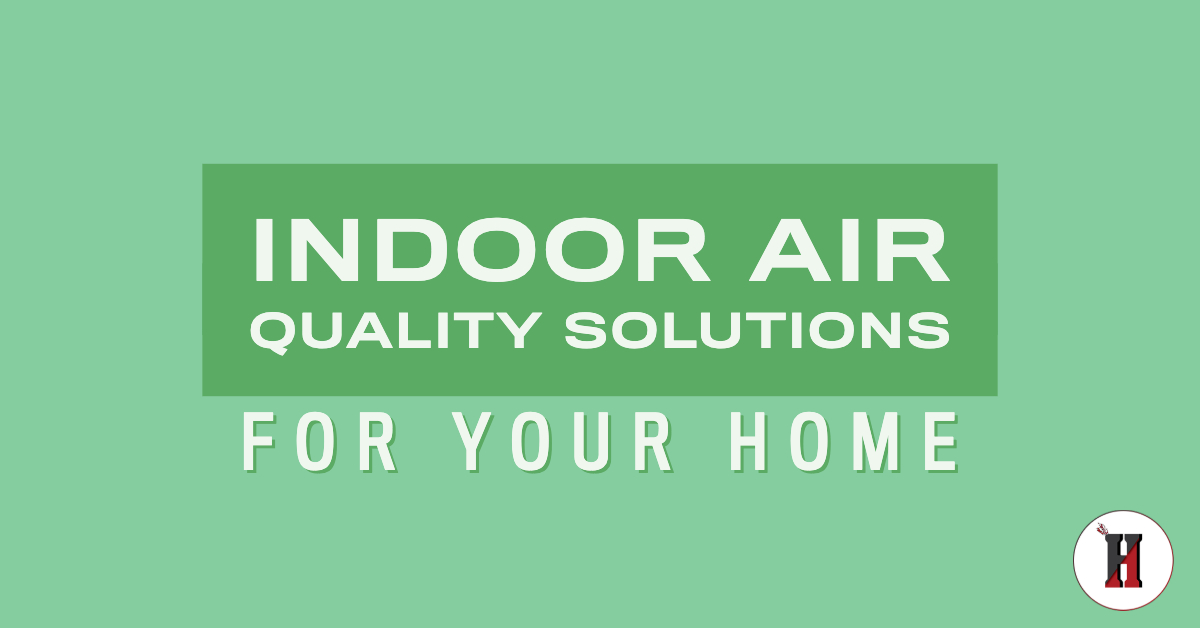Your windowpanes can be immaculate. Your floors can shine. However, for countless adults and adolescents with asthma, allergies, and other respiratory ailments, a home is only as clean as the air we breathe.Believe it or not, indoor air can be several times more polluted than what we breathe outdoors. And while it’s not likely to reduce all the allergens within your home, you can reduce the number — and your vulnerability to them — by taking some easy steps.
We at Huber Heights Heating & Cooling offer some tactics you can use to enhance air quality inside your home and quickly improve your allergy symptoms.
“CLEANLINESS IS GODLINESS”
A neat house makes for a healthy home because proper indoor sanitation can seriously cut down on dust and animal dander, experts say. Your sanitation efforts should focus on strategies to reduce the accumulation of pet dander, mold, and dust hiding in your home.
ENGULF IT WITH A VACUUM
At least once or twice a week, utilize a vacuum cleaner on your rugs and carpets. Be certain your vacuum is equipped with a HEPA filter. Also, moving forward, going with hard-surface flooring rather than wall-to-wall carpeting should also diminish the number of allergens in your house.
FOCUS ON ITEMS THAT DRAW ALLERGENS
Regularly clean bedcovers, drapes, and other things that draw allergens—particularly if you have pets. Experts suggest washing in water that is at a minimum of 130° F. Also, consider using dust mite–proof pillow covers, in addition to mattresses and box springs, whenever possible.
Finally, remove clutter that traps and holds dust that can cause symptoms.
KEEP THE PLANTS OUTDOORS
Plants can be pretty indoors, but they can also encourage the growth of mold. You should avoid having plants indoors, experts suggest, if indoor allergens are a problem.
While some people say plants assist in improving indoor air quality by releasing oxygen, there’s no disputing they are still allergy triggers for many people. In other words, they cause more complications than they solve.
REGULARLY REPLACE YOUR AIR FILTERS
If you enjoy a forced-air heating system, make sure to replace the filters frequently. Electrostatic filters can help ensure that dust and other airborne annoyances get filtered out instead of being recirculated throughout your home.
Also, consider having your ducts cleaned to clear out trapped dust in them. This might not always be desirable, but it assists in some cases. The Environmental Protection Agency informs homeowners on making this determination at https://www.health.harvard.edu/iaq.
CONSIDER AIR PURIFIERS
If indoor contaminants cause your allergies to flare up and you can’t manage the source of the dilemma — for instance, you’re opposed to giving up the household pet — it might help to invest in an indoor air purifier. Locate it in the most routinely used areas of the house. These devices, mainly ionic purifiers, can help arrest some of the irritants that might be causing your problems. With a purifier, you probably won’t be able to eradicate these allergens, but you can cut them down, which might help the issue.
INVEST IN A DEHUMIDIFIER
Consider a dehumidifier in wet areas, such as the basement, to help in stopping the germination of mold. Guarantee that bathrooms, another potential source of mold, are aired as well. In the shower, on walls or fixtures, be sure to wash off any observable mold that accumulates.
CRACK A WINDOW
Believe it or not, even in the colder months, it can be ok to crack open windows briefly to allow fresh air to flow into your living spaces. Additionally, eliminate possible air contaminants by using fans in the kitchen to remove cooking fumes.
TAKE OFF YOUR SHOES
No one knows or wants to know what’s on the bottom of your shoes. And certainly, no one wants it in their home. Be sure everyone coming in takes off their shoes. It might not be a bad idea to get a shoe rack, or a boot tray to collect dirt, pesticides, led, and additional pollutants from creeping their way into your house.
CHECK YOUR FURNITURE
Did you know that some of your furniture might be manufactured with toxic adhesives that can hold dangerous chemicals? On top of that, finishing products like lacquers and varnishes could cause complications with some people with allergies and asthma. Steer clear of furniture built with woods that have been treated with the chemical formaldehyde and constructed with toxic glues.
For more information, or for an air-cleansing tune-up, call Huber Heights Heating & Cooling today at 937-226-9675, or schedule an appointment now at www.huberheightsheatingandcooling.com/schedule-now/.







